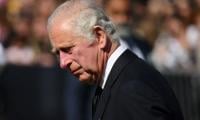Horror visited Peshawar once again on Friday – this time in a Shia mosque in the city’s Qissa Khawani bazaar area during Friday prayers. With a high death toll and an even higher number of injured in the cowardly suicide attack, Peshawar – a city traumatised over and over again in the past few decades – once again saw the worst of terror, unleashed seemingly with ease. Scenes of mayhem and intense grief could be seen at the Lady Reading Hospital where the victims were taken. Once more, we see relatives mourn. Once more, we hear stories of people searching for bodies of their loved ones. Once more, we see images of bloodied survivors and those that are forever lost to a mindless hatred. And, once more, we hear statements of condemnation from the government and its representatives. According to what we know so far, two bombers entered the area, shot dead one of the policemen on duty, while the suicide bomber, who was a part of the duo, entered the mosque and detonated his device.
Regardless of which group is responsible for the attack, this attack clearly shows that our war against militancy is far from over. For every attack the state is able to thwart – and there is a long list of potential attacks that have been prevented – there is one such terror attack that strikes at the heart of a community. We had hoped to never again see those days in the early 2000s when terror attacks occurred on a regular basis, across the country. But we appear, once more, to be returning to those times. Militancy in the form of the TTP or the Islamic State of Khorasan or any of their allies is obviously a national problem, and while they attack indiscriminately, they bear a particular animosity for the Shia community that has been ruthlessly targeted since the 1980s with hundreds of sectarian attacks on places of worship in the last 15 years. From the Hazara Shia community that has suffered immense loss over the years to attacks such the one on Friday, sectarian-based terror has continued. This raises the questions of why the government has not done more to provide security to imambargahs or Shia mosques, especially on Fridays when militants are most likely to strike so that they can cause maximum casualties.
We also ask at this point, what has become of the National Action Plan worked out after the APS killings in December 2014. It doesn’t seem much has been achieved if terrorists can still kill at will and act without being deterred. The National Action Plan was intended to stop this. In the aftermath of this attack, the state has to dispassionately judge how well it has implemented the National Action Plan. While there have been successes in defeating militant groups in Fata, NAP was meant to be broader than just military operations. We were supposed to root out not just extremist groups but the extremist mindset that has flourished in the country. Pakistan’s security problems have continued for far too long. Some strategy needs to be devised to bring them to an end. While the interior minister instantly laid blame on the external forces, the fact is that these external forces would have needed inside help. We need to track down where that help came from, and how the attack was planned. We have to face this fact and move forward in a direction that can bring an end to the violence we now face once again, and which further destabilises an already shaky country. The war against militancy cannot be fought only on the battlefield. Defensive measures are especially essential to protect a vulnerable population. So far, the state has failed in this very basic of its duties. What we need is a refocus on combining the best of intelligence gathering with all that NAP was meant to do. It is only then that something as routine and regular as people congregating to pray does not end in the worst tragedy of their lives.















